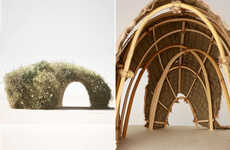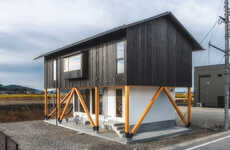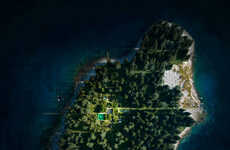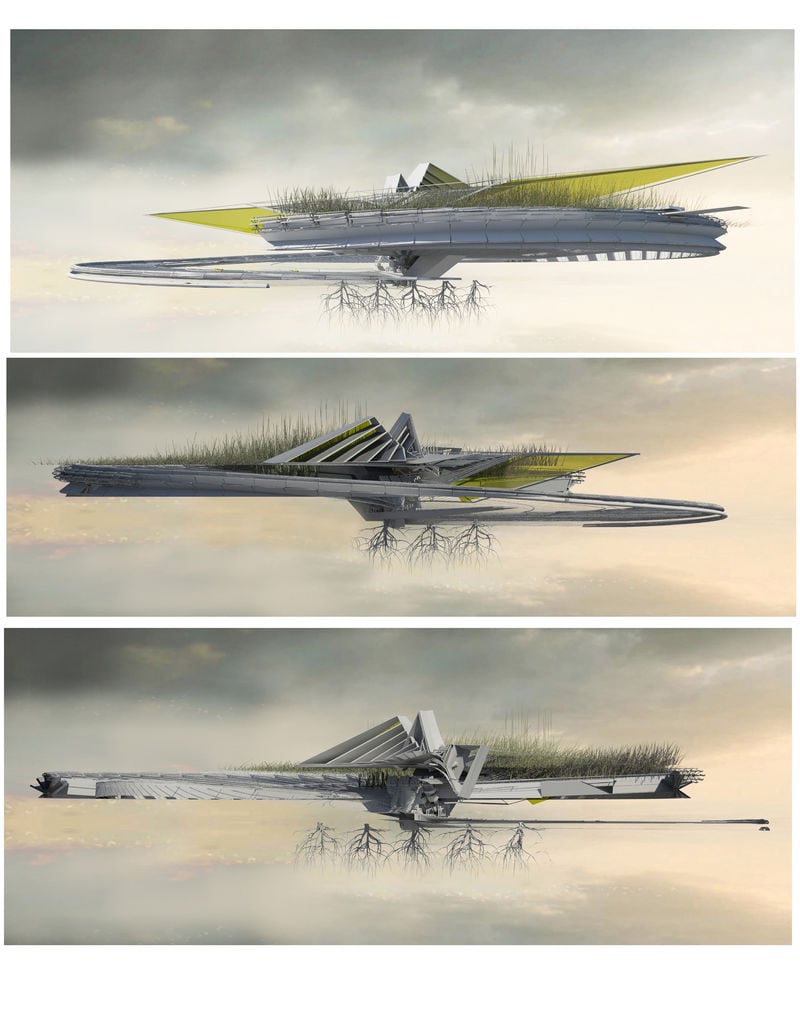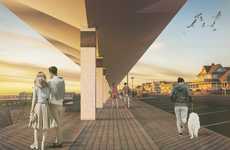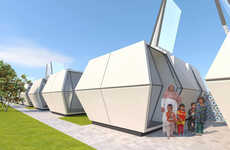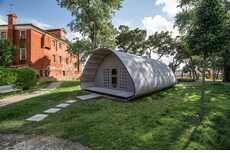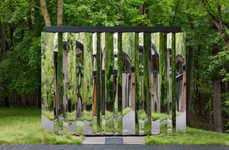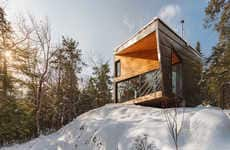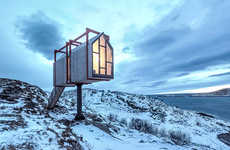
this Ecological residence buries itself during hurricane winds
Margot Krasojevic — January 3, 2018 — Eco
References: margotkrasojevic.org
This innovative environmental disaster shelter is located in Louisiana, a state near the Gulf of Mexico exposed to Southern hemisphere hurricanes. As these hurricanes rotate anticlockwise moving inland, with winds reaching 150mph, this ecological house uses wind strength to turn and sink into a partly excavated landscape. The house twists and buries itself as winds mobilize its hydraulic pivots, excavating the substructure into which it burrows.
The house is designed in sections, with the main living space being a mobile structure that acts as a disaster shelter, disengaging from the rest of the building by slowly twisting as winds hit speeds of 70 miles an hour. Its lightweight pre-cast concrete frame is anchored to a grid of steel tension wire foundations that release and restrain the moving structure, towing it along the rails of the Helicoid retaining wall into the substructure, to safety. The hydraulic pivots help turn the house into position.
An artificial wetland contains the residence and acts as a canopy which facilitates irrigation and floodwater drainage during a storm. Meanwhile, aquatic Macrophyte plants help absorb floodwater and environmental pollutants during ecological disasters. The twisting living area acts as a waterproof emergency shelter that self-excavates its immediate context and the architecture is an inhabitable industrial typology, a working building that protects using environmental dynamics rather than relying on inflexible building robustness of building load to withstand force.
The house is designed in sections, with the main living space being a mobile structure that acts as a disaster shelter, disengaging from the rest of the building by slowly twisting as winds hit speeds of 70 miles an hour. Its lightweight pre-cast concrete frame is anchored to a grid of steel tension wire foundations that release and restrain the moving structure, towing it along the rails of the Helicoid retaining wall into the substructure, to safety. The hydraulic pivots help turn the house into position.
An artificial wetland contains the residence and acts as a canopy which facilitates irrigation and floodwater drainage during a storm. Meanwhile, aquatic Macrophyte plants help absorb floodwater and environmental pollutants during ecological disasters. The twisting living area acts as a waterproof emergency shelter that self-excavates its immediate context and the architecture is an inhabitable industrial typology, a working building that protects using environmental dynamics rather than relying on inflexible building robustness of building load to withstand force.
Trend Themes
1. Environmental Disaster Shelters - Innovative designs for disaster shelters that incorporate ecological principles and dynamic architecture.
2. Disaster-resistant Architecture - Developing architecture that can withstand natural disasters like hurricanes, tornadoes, and earthquakes.
3. Ecological Infrastructure - Creating ecological infrastructure that can absorb and mitigate environmental disasters.
Industry Implications
1. Architecture - Designing innovative building solutions that respond to the challenges of climate change and natural disasters.
2. Construction - Building disaster-resistant structures that are mobile, lightweight, and can self-excavate.
3. Environmental Engineering - Developing ecological infrastructure and sustainable solutions to mitigate and adapt to environmental disasters.
6.7
Score
Popularity
Activity
Freshness

